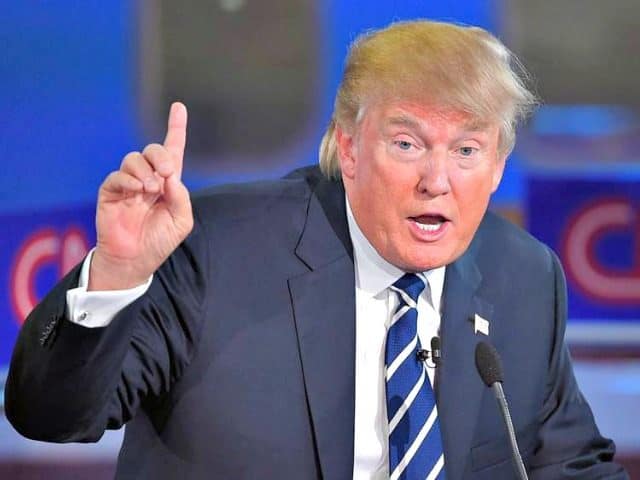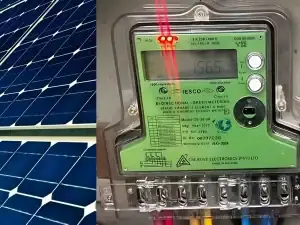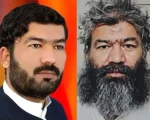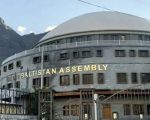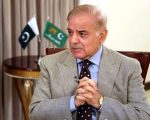Evident it is by now that the incumbent US president Trump’s favorite foreign policy tool is money and he has developed a habit of implying this ‘arsenal’ quite so often with a view to achieving political and strategic objectives.
And though Asad Umar may sound politically correct by asking the US to care for its own debt owed to China, not about Pakistan’s, the danger of coming under severe economic pressures from Washington cannot be ruled out.
Even before Mr. Trump landed in the White House, his major campaign promise was to build a wall along the US-Mexico border and make Mexico pay for it. His political opponents at home and international observers were thinking how he would actually achieve the objective if he was to win the election. Win he did and made it clear that the way to charge Mexico was there in higher tariffs.
Even when the countries like Canada attempt to differ with his policies he takes no time in making it clear that such differences are going to cost them “a lot of money.”
His most notable economic and trade war is ongoing with China. The scale of imports from China he targeted – despite having expressed his personal liking for Chinese leaders – was mammoth. The two countries are continuing to impose tit-for-tat tariffs and other economic penalties on each other much to the dismay of the rest of the world. Such an economic war does threaten the smooth conduct of commercial relations around the globe.
The new set of economic sanctions against Iran are clearly aimed at having a nuclear deal with Tehran that satisfies the US that Iranians do not move towards possessing nukes in years ahead. And Turkey becomes the latest direct target whose aluminum and steel exports to the US have been slapped with additional, higher tariffs. The immediate target is to pressurize Ankara to release American pastor Andrew Brunson who is being held and tried on espionage charges.
Russia has its own share of ‘sanctions’ to tackle. And even America’s close allies such as EU and NATO members are constantly being cajoled into spending higher for defense so that the US’ contributions towards NATO’s activities – the operations that serve US objectives, primarily – may be cut. And international companies doing business with countries under sanctions are also being threatened.
Form a Pakistani perspective, let us not forget that Trump had started the rhetoric against Pakistan on the very first day of 2018 claiming to give the country billions and billions of dollars and not receiving enough in return.
The “do more” demand and its contours – where the Americans want Pakistan to remain engaged in a constant war with militants – need little explanation. The threatening statement of the US Secretary of State that the US would not favor IMF loans to Pakistan being used to repay Chinese loans – though factually misleading – should be taken very lightly. A letter to that effect has already been written by the US State Department to the IMF.
Yes, Pakistan’s debt trap of today is not because of Chinese loans coming for CPEC. But it does not change the reality that the US still has the reins – to a large extent – not only of the Fund but also the World Bank group and also the Asian Development Bank. Besides, though the Islamic Development Bank (IDB) has reportedly approved a new loan of $ 4 billion for Pakistan, one has to keep it in view that the largest shareholders of IDB – the Saudis in addition to other oil-rich Arabs – would not like to antagonize the US.
In our view, a financial onslaught against Pakistan has already been started by placing the country on the so-called ‘Grey List’ of the Financial Action Task Force (FATF) – the global money-laundering watchdog. The recent review by the Asia Pacific Group (APG) of FATF of how Pakistan is faring in compliance with the 10 point Action Plan of the watchdog is not very encouraging, the reports indicate. (Daily Pakistan Global will be coming up with a piece containing details of progress and review in days ahead.)
The US itself, the UK and the Gulf Cooperation Countries (GCC) are the sources where more than three fourth of around $ 20 billion remittances of overseas Pakistanis originate from. This has been a crucial help for Pakistan’s Balance of Payments (BoP) over past decade or so. And this is where the US has a lot of influence. The flow of this money can sure be disrupted if so is desired.
The US remains the single largest market absorbing Pakistan’s deteriorating exports. The US administration has not so far opted for pressurizing Pakistan on this front. A country in desperate need of reviving its exports can hardly afford any drastic measure such as higher tariffs and duties on Pakistani products.
Seen from the geostrategic angle, the US’ new South Asia policy and renewed campaign in Afghanistan remains short of achieving objectives. And Pakistan in every such situation has been used as a punching bag. Right now it is not only Afghanistan. The US’ strategic designs and objectives in this region also entail keeping Pakistan away from Chinese sphere of influence, providing India an overland access to Afghanistan, stopping Iran from developing regional connectivity and economic partnerships and Pakistan playing an active role in favor of Saudi-led camp in the deteriorating security situation of the Middle East.
The new government in Islamabad may have to face an even tougher economic line by the US – though the objectives would not be simply that, economic.

